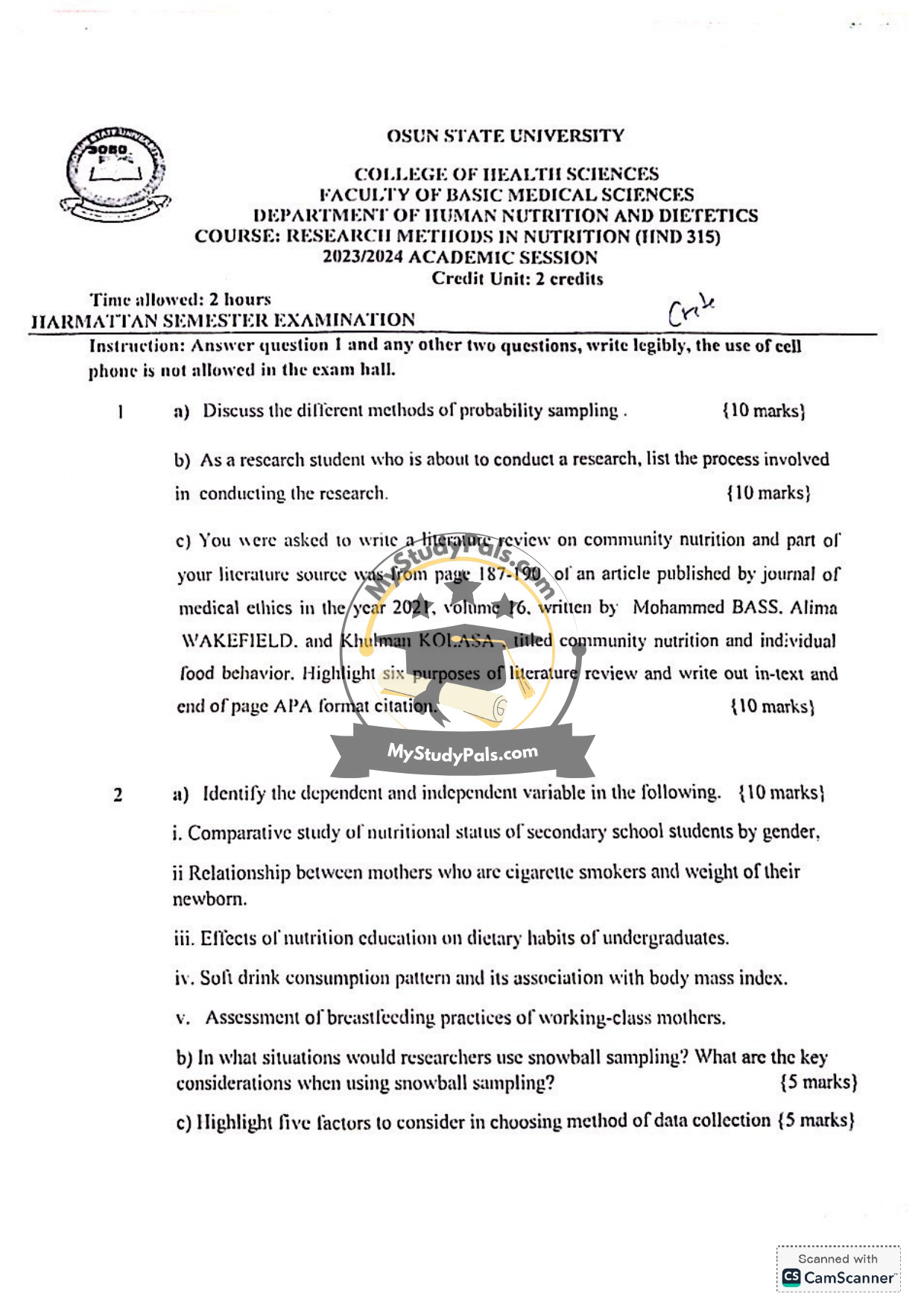ANWSER
Question 1:
a) Discuss the different methods of probability sampling.
Answer:
Probability sampling is a sampling technique in which every member of the population has a known, non-zero chance of being selected. The main types include:
- Simple Random Sampling: Every individual has an equal chance of being selected. This can be achieved using random number generators or drawing lots.
- Systematic Sampling: The researcher selects every nth member from a list of the population after a random start.
- Stratified Sampling: The population is divided into subgroups (strata) based on shared characteristics, and random samples are drawn from each stratum.
- Cluster Sampling: The population is divided into clusters, often geographically. Entire clusters are randomly selected, and all or some individuals from selected clusters are surveyed.
- Multi-stage Sampling: Combines several sampling methods. For example, first selecting clusters, then using simple random sampling within clusters.
b) As a research student who is about to conduct a research, list the process involved in conducting the research.
Answer:
The research process includes the following steps:
- Identifying the research problem
- Reviewing related literature
- Formulating hypotheses or research questions
- Designing the research (methodology)
- Collecting data
- Analyzing data
- Interpreting results
- Drawing conclusions and making recommendations
- Writing the research report
- Presenting and publishing findings
c) You were asked to write a literature review on community nutrition… Highlight six purposes of literature review and write out in-text and end of page APA format citation.
Answer:
Purposes of a Literature Review:
- To identify gaps in existing research.
- To provide background and context for the research.
- To establish the significance and relevance of the research topic.
- To avoid duplication of work.
- To identify theoretical frameworks and methodologies used in related studies.
- To inform the research design and data collection.
In-text citation:
(Wakefield, Kolasa, & Bass, 2021)
APA End-of-page citation:
Wakefield, A., Kolasa, K., & Bass, M. (2021). Community nutrition and individual food behavior. Journal of Medical Ethics, 16, 187–190.
Question 2:
a) Identify the dependent and independent variable in the following.
Answer:
i. Comparative study of nutritional status of secondary school students by gender
- Independent variable: Gender
- Dependent variable: Nutritional status
ii. Relationship between mothers who are cigarette smokers and weight of their newborn
- Independent variable: Smoking status of mothers
- Dependent variable: Weight of newborn
iii. Effects of nutrition education on dietary habits of undergraduates
- Independent variable: Nutrition education
- Dependent variable: Dietary habits
iv. Soft drink consumption pattern and its association with body mass index
- Independent variable: Soft drink consumption pattern
- Dependent variable: Body mass index (BMI)
v. Assessment of breastfeeding practices of working-class mothers
- Independent variable: Working-class status
- Dependent variable: Breastfeeding practices
b) In what situations would researchers use snowball sampling? What are the key considerations when using snowball sampling?
Answer:
Situations for snowball sampling:
- When studying hard-to-reach or hidden populations (e.g., drug users, undocumented immigrants).
- When population members are few and difficult to identify without referrals.
Key considerations:
- Ensuring participant confidentiality and trust.
- Avoiding sample bias due to homogeneity in social networks.
- Maintaining clear criteria for participant selection.
- Monitoring the chain of referrals to avoid data redundancy.
c) Highlight five factors to consider in choosing method of data collection.
Answer:
- Nature of the research problem
- Population characteristics (e.g., literacy level, location)
- Availability of resources (time, funds, manpower)
- Required level of accuracy and reliability
- Ethical considerations (privacy, consent, sensitivity)


